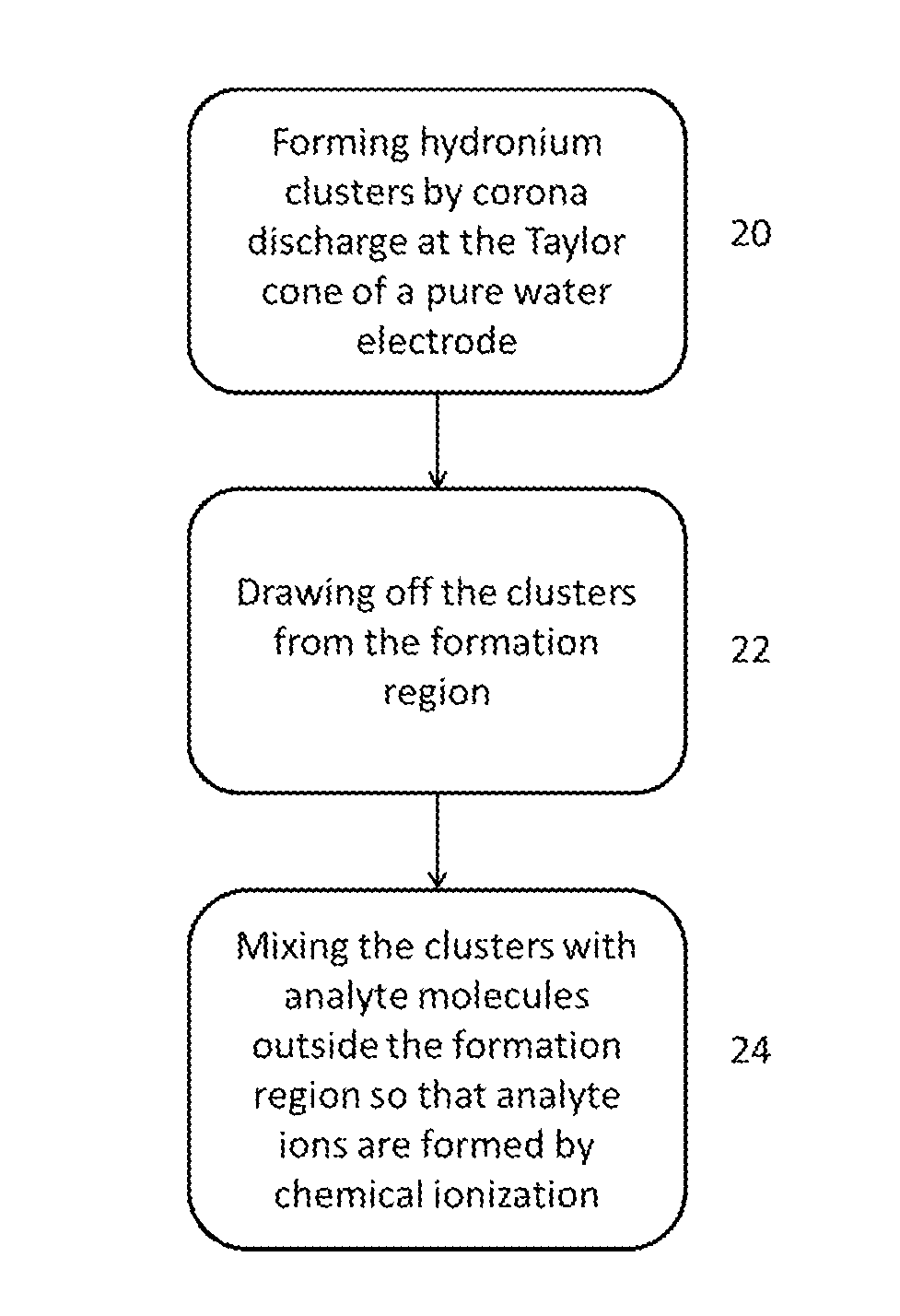Chemical ionization with reactant ion formation at atmospheric pressure in a mass spectrometer
a mass spectrometer and reactant ion technology, applied in the direction of chemistry apparatus and processes, electric discharge tubes, particle separator tubes, etc., can solve the problems of undesirable mass spectral fragmentions, oxidative changes of analyte molecules, and inability to energetically achieve the effect of long lifetime and operating tim
- Summary
- Abstract
- Description
- Claims
- Application Information
AI Technical Summary
Benefits of technology
Problems solved by technology
Method used
Image
Examples
Embodiment Construction
[0023]While the invention has been shown and described with reference to a number of embodiments thereof, it will be recognized by those skilled in the art that various changes in form and detail may be made herein without departing from the spirit and scope of the invention as defined by the appended claims.
[0024]Hydronium clusters [H(H2O)n]+ are produced in a small discharge chamber at atmospheric pressure, separate from the feeding in of the analyte molecules; and the hydronium clusters are brought together with the analyte molecules at a location outside the discharge chamber. In order to achieve a pure mixture of a guide gas, preferably pure nitrogen, with hydronium clusters, it is preferable to use a corona discharge at the Taylor cone of pure water at the tip of a fine capillary with an inside diameter of around 0.2 to 0.8 millimeters. Neither ozone nor ions of impurities or synthesis products are produced in this process; reactive neutral radicals have sufficient time to fin...
PUM
 Login to View More
Login to View More Abstract
Description
Claims
Application Information
 Login to View More
Login to View More - R&D
- Intellectual Property
- Life Sciences
- Materials
- Tech Scout
- Unparalleled Data Quality
- Higher Quality Content
- 60% Fewer Hallucinations
Browse by: Latest US Patents, China's latest patents, Technical Efficacy Thesaurus, Application Domain, Technology Topic, Popular Technical Reports.
© 2025 PatSnap. All rights reserved.Legal|Privacy policy|Modern Slavery Act Transparency Statement|Sitemap|About US| Contact US: help@patsnap.com


